Armyworms
Armyworms are a type of pest that can cause significant damage to lawns and crops without proper armyworm pest control treatment. They have cylindrical-shaped bodies and come in various colours, including green, black, brown, or grey, with distinct stripes along their bodies. They are named for their tendency to move in a group, resembling an army on the move. These pests typically lay eggs in grassy areas such as fields, lawns, and pastures. They prefer areas with high vegetation and moist soil. Once eggs hatch, the larvae emerge and begin their feeding frenzy. Armyworms are voracious eaters, consuming a wide range of plants and grasses. Their feeding habits can cause severe damage, stripping lawns and crops of their leaves.
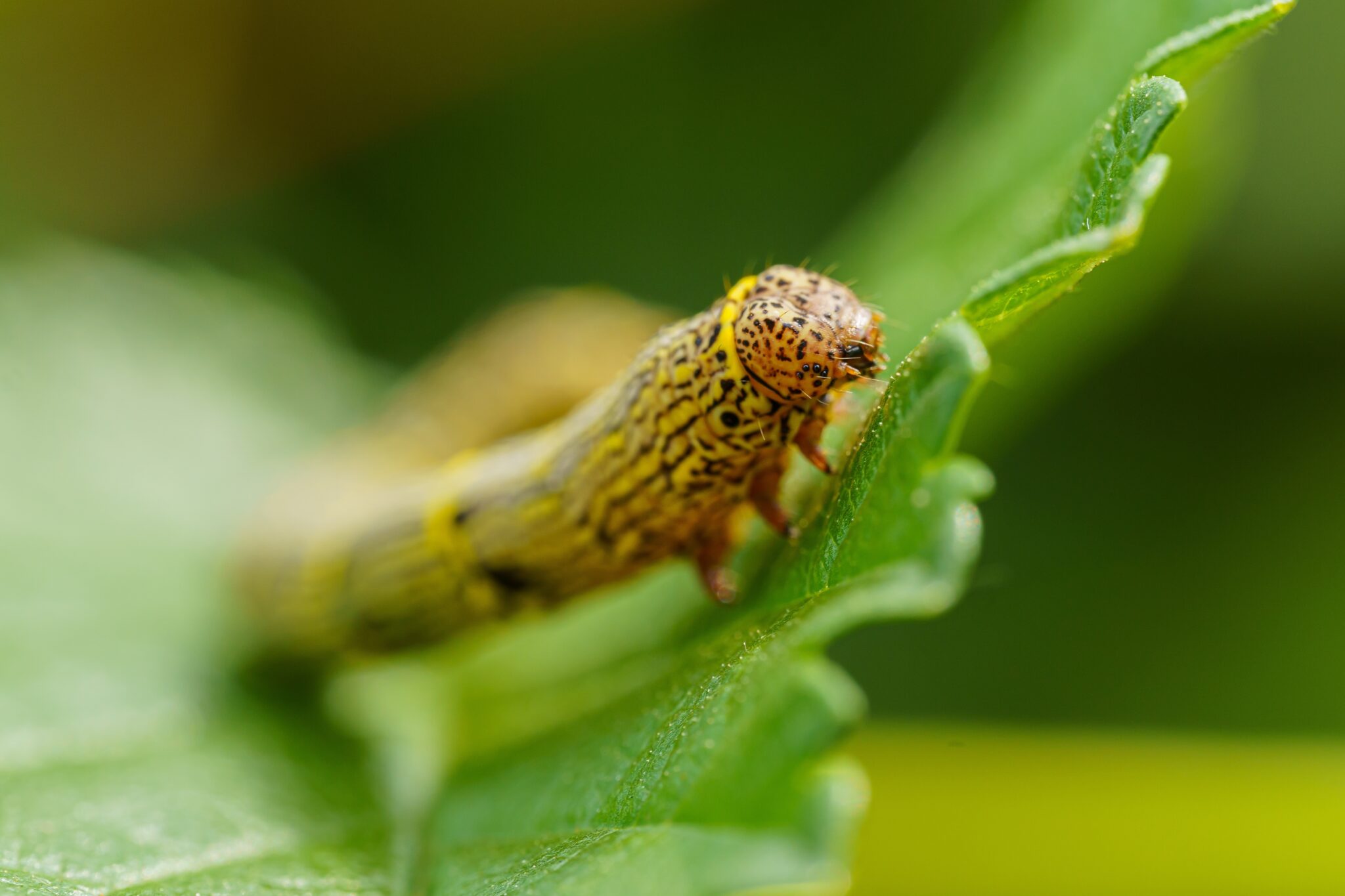
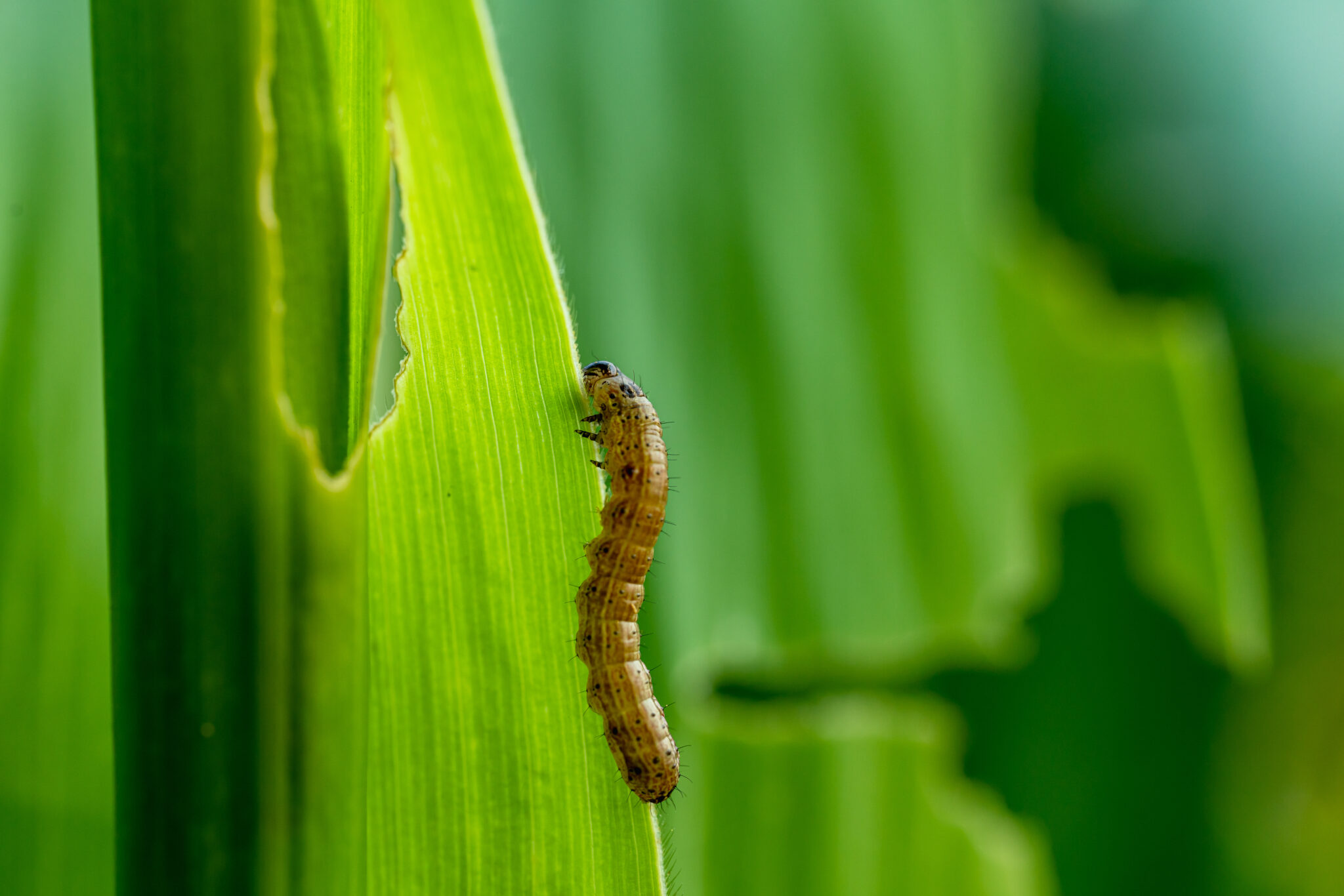
How to Identify Armyworms
Armyworms are destructive pests that can wreak havoc on crops and plants. It is important to be able to identify these pests in order to effectively control them. Both the larvae and adult moths have distinguishing characteristics that can help in their identification.
To identify armyworms, you need to first understand their lifecycle. The adult moths lay their eggs in masses, often on plants or other surfaces near a food source. These eggs hatch into larvae, which are the most damaging stage of the armyworm.
When identifying armyworm larvae, you should look for several key characteristics. They have a smooth body with a distinct pattern of markings. The most common coloration is light green to brown, but can also include shades of grey or black. The larvae have a distinct head with six small eyes on each side. They also have six true legs and several pairs of prolegs. As they grow, the larvae go through several molts, with their coloration and markings becoming more prominent.
Adult armyworm moths are typically light brown in colour, with dark brown markings on their wings. The wingspan of an adult moth can range from 25 to 40 millimetres. The distinctive markings on their wings help differentiate them from other moth species.
There are several common types of armyworms, each with their own coloration. The most common types include the true armyworm, which is greenish-grey with a pale yellow stripe down the back. The fall armyworm has a distinct pale white stripe down the middle of its back.
Identifying armyworms is crucial for effective control measures. By accurately identifying these pests, farmers and gardeners can take targeted action to prevent or minimise the damage they cause.
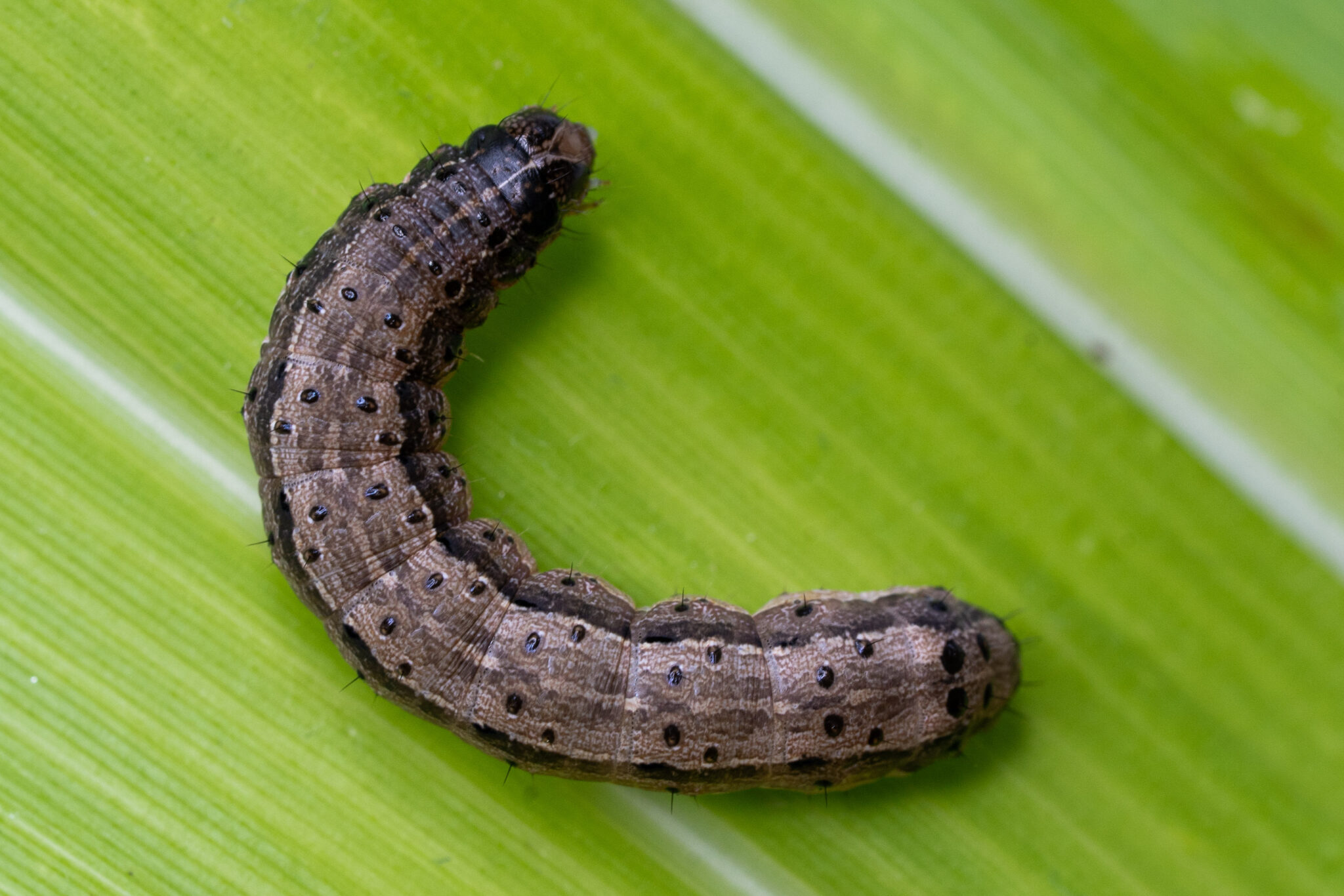
Armyworm Prevention and Control
Armyworm infestations can be prevented and controlled in your garden through a combination of early detection, confinement of damage, cultural practices, and the use of preventative treatments. By being proactive and following these steps, you can effectively manage armyworms and protect your plants.
Early warning signs of armyworm infestations include yellowing or browning of leaves, ragged or chewed edges on leaves, and the presence of small green or brown caterpillars. It is important to regularly inspect your plants and look out for these signs. If detected early, you can confine the damage to a small area by manually removing the affected leaves or plants and disposing of them away from the garden. This will prevent the armyworms from spreading and causing further damage.
Implementing cultural practices will also help prevent and control armyworm infestations. This includes removing decaying material, such as fallen leaves or rotting fruits, as armyworms are attracted to these areas for feeding and breeding. Clearing crops at the end of each season and cleaning up the garden will eliminate potential hiding spots for armyworms.
By following these measures, you can effectively prevent and control armyworm infestations in your garden, minimising the damage caused by these pests. Remember to stay vigilant, regularly inspect your plants for early signs, and take immediate action to confine and address any infestations that may occur.
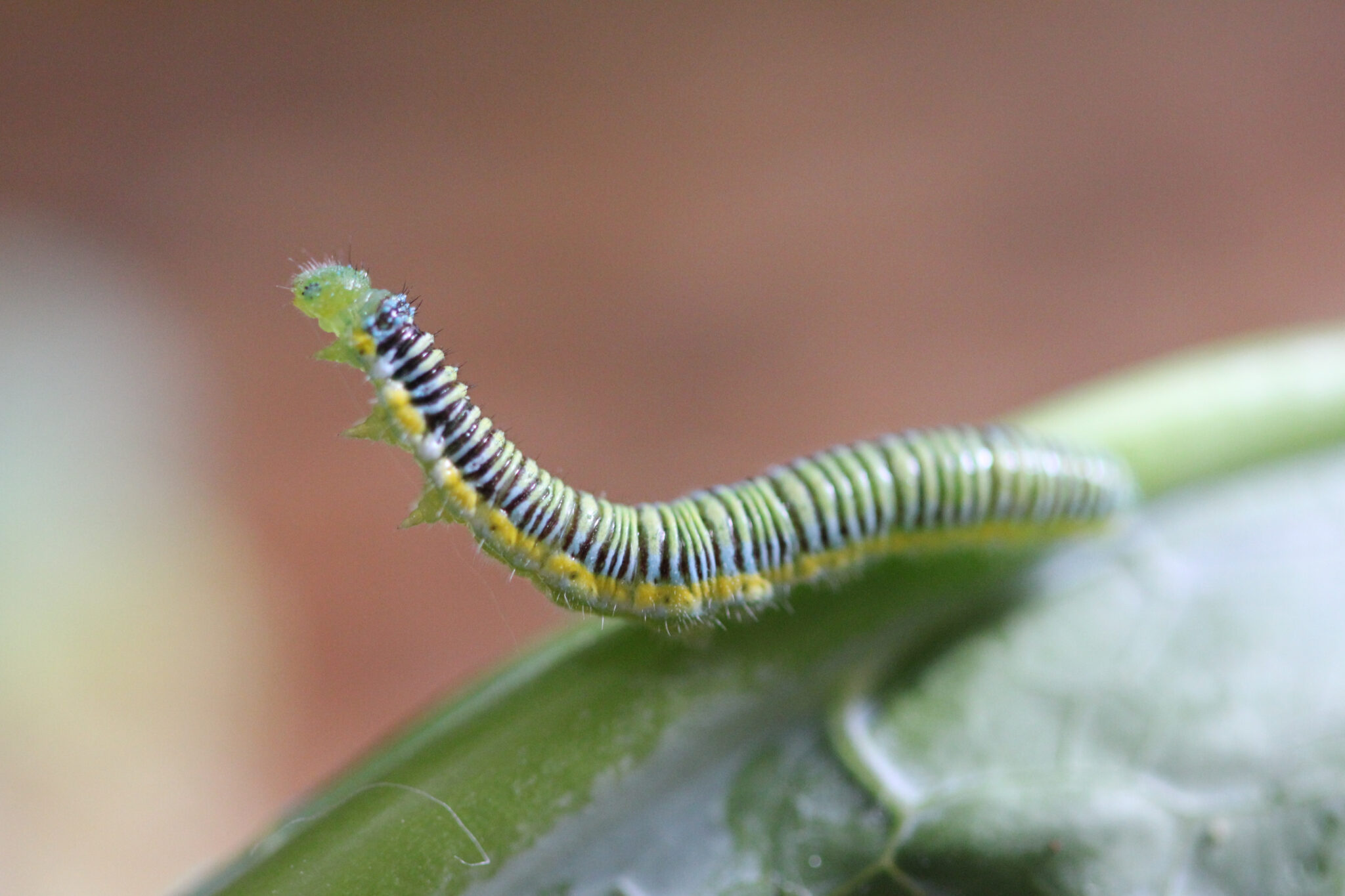
How to Get Rid of Armyworms
To effectively get rid of armyworms, there are several methods you can employ. One of the most common options is applying insecticide specifically designed to target these pests. The insecticide can be sprayed directly on the armyworms or applied to the affected plants to prevent further damage. However, it is essential to carefully follow the instructions and dosage recommendations to avoid harm to beneficial insects and other wildlife.
In some cases, handpicking can be a practical solution, especially if the population of armyworms is limited. Simply pick the caterpillars off the plants and dispose of them by drowning them in soapy water. This approach requires vigilance and should be repeated daily until the infestation is under control.
When using any method to eradicate armyworms, it is crucial to avoid harmful pesticides and practices that can harm beneficial insects. These beneficial insects play a significant role in maintaining a healthy ecosystem and pollinating plants, so their protection is essential. Furthermore, excessive use of pesticides can have detrimental effects on other wildlife and can contribute to pesticide resistance in armyworms over time.
By employing these treatment methods and avoiding harmful pesticides, you can effectively control and eliminate armyworm infestations while preserving the health of your garden ecosystem.
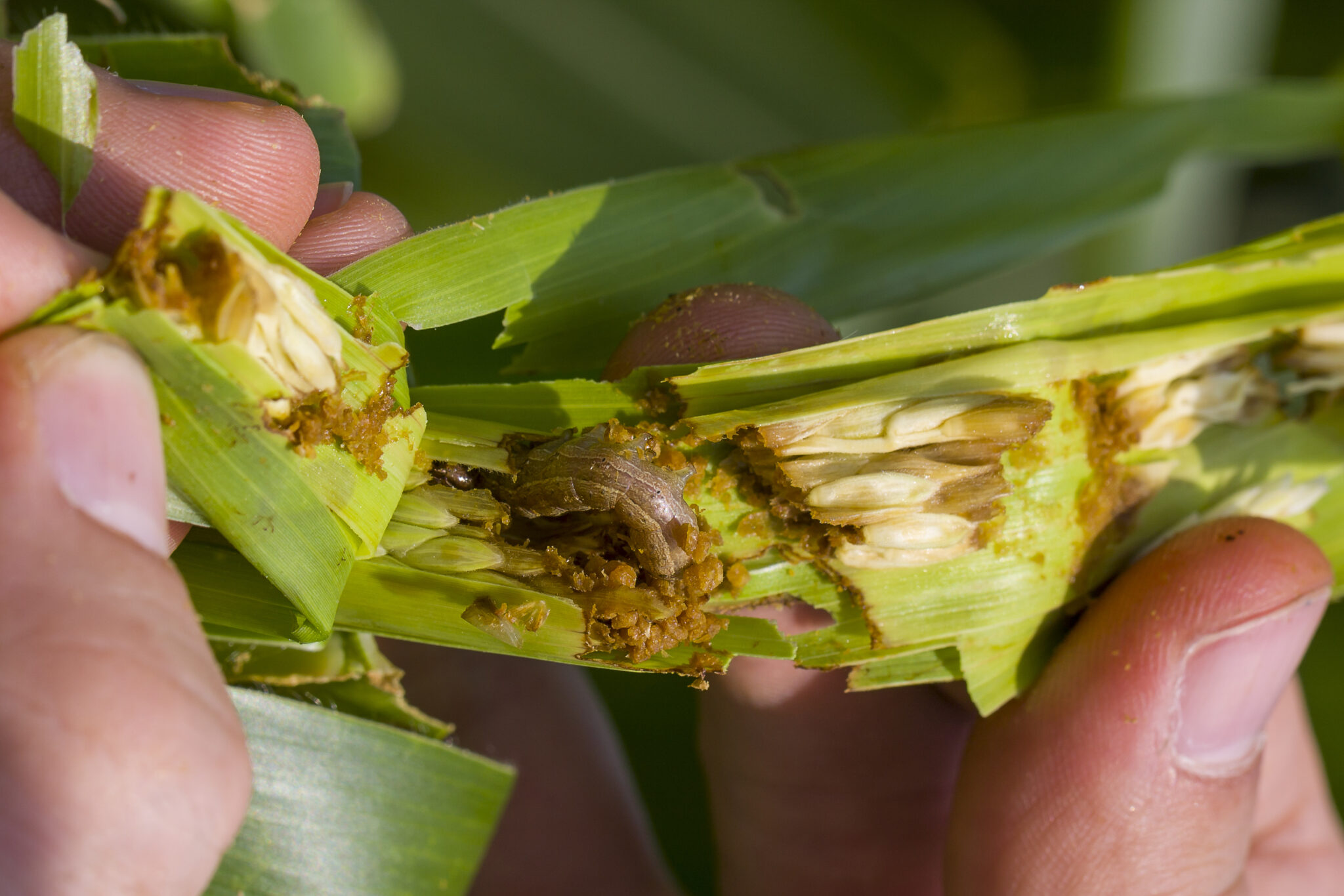
Armyworm Damage and Targets
Armyworms are notorious pests that can cause extensive damage to various crops and plants. These destructive insects primarily target agricultural crops, but they can also infest lawns and gardens. The damage caused by armyworms can be devastating, leading to significant economic losses for farmers and gardeners.
One of the most common signs of armyworm infestation is the presence of tattered chewing marks on leaves. These pests have strong mandibles, which they use to feed on plant material. As they munch through the leaves, they leave behind ragged edges and irregular holes. Another telltale sign is the presence of multiple holes in a neat line, as armyworms feed in groups, often creating distinctive patterns of damage. In severe cases, the infested areas of the garden or field may be almost decimated, with only skeletal remains of plants left.
Armyworms pose a threat to a wide range of crops. Maize, oats, wheat, lettuce, cabbage, beans, and corn are among the crops that are most susceptible to armyworm damage. Lawns, too, can suffer from their invasion, as armyworms nibble away at the grass, leaving brown patches in their wake.
One unique characteristic of armyworms is their ability to cause highly localised damage. They are capable of chewing straight through plant stems, severing the connection between roots and leaves. This localised damage can weaken plants and make them more susceptible to other pests and diseases.
Commercial Pest Solutions
Integrated Armyworms Solutions
It is essential for businesses to prioritise the health and safety of their employees and customers. Armyworms not only pose a health risk but also damage property and reputation. Flick’s professional commercial pest control services provide tailored solutions to prevent and eliminate any pest infestations, ensuring a clean and hygienic environment for everyone. Our regular inspections and treatments help to maintain a pest-free workplace and protect your business from potential pest related damage. Trusting in Flick’s commercial pest control solutions is a smart investment in the long-term success and reputation of any business.
Common Armyworms Questions
What are armyworms?
Armyworms are a type of caterpillar that devastates grass and crops. They are named after their behaviour of moving in armies, quickly consuming vegetation in their path.
How do armyworms damage grass?
Armyworms feed on grass blades, stripping them down to the stem and leaving behind brown patches. They can rapidly destroy an entire lawn or pasture if left unchecked.
How do I know if my grass is infested with armyworms?
Signs of armyworm infestation include irregular patches of brown grass, close inspection revealing chewed grass blades, and the presence of greenish-brown excrement pellets known as frass.
How can I prevent armyworm damage in my grass?
Regularly inspect your lawn for any signs of armyworms. Practising proper lawn care such as regular mowing, watering, and fertilising can also help keep your grass healthy and less susceptible to infestations.
Can armyworms be harmful to humans or pets?
Armyworms do not pose a direct threat to humans or pets. However, some individuals may be allergic to the caterpillar’s hairs, causing skin irritation or respiratory issues on contact.
Common Armyworms Species
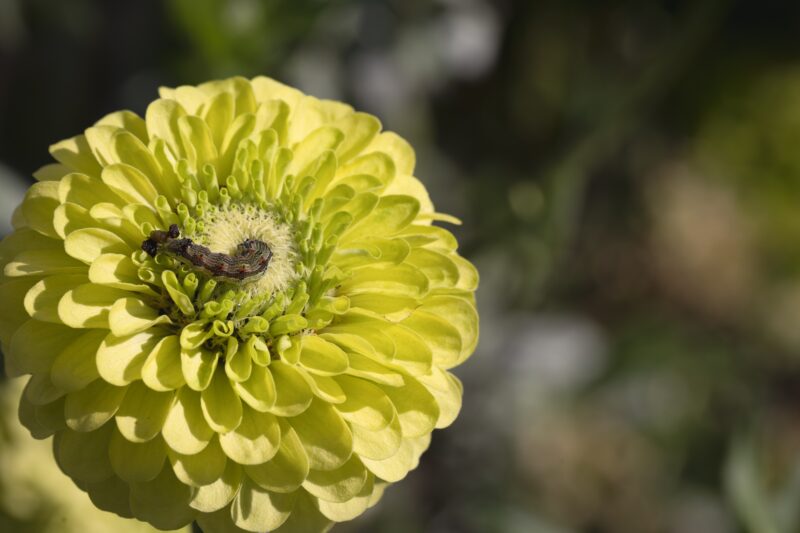
Australian Armyworm
Apppearance
Common, or Australian armyworms (Leucania convecta) have smooth bodies with a few fine hairs. Their body colour can vary, but larvae are generally green, brown or yellow with parallel longitudinal stripes running along their body.
Lifestyle
Larvae live and pupate in the soil and are nocturnal. Armyworms almost always fly into crops following short to long distance migrations.
Habits
The Australian armyworm is found in all states of Australia and can invade all major cropping regions year-round, but particularly spring and summer. Barley, oats and rice are most susceptible to economic damage, but Australian armyworms are also commonly found in wheat, triticale and grass pastures.
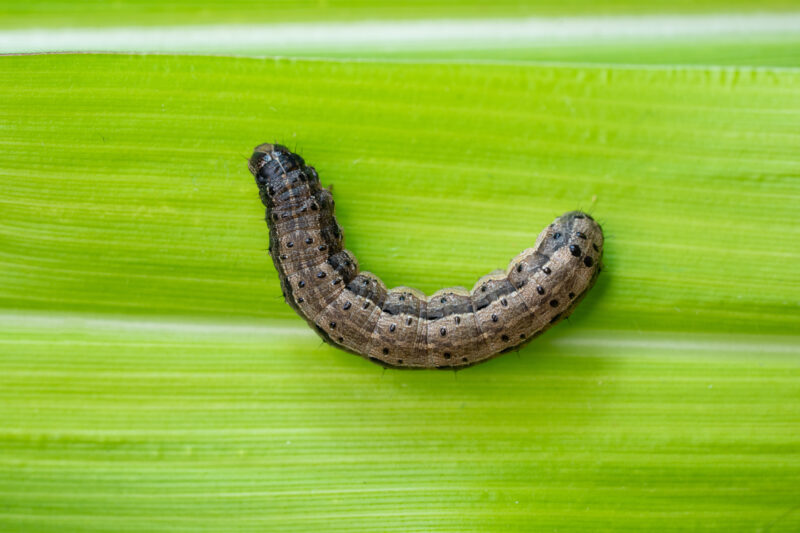
Fall Armyworm
Apppearance
Fall armyworms (Spodoptera frugiperda) are generally greyish-brown with dark stripes along their bodies.
Lifestyle
They are native to the Americas but have spread globally. Their preferred hosts are corn, sorghum, rice, wheat, and grasses.
Habits
Up to eighty different plant varieties are consumed by the fall armyworms who exist globally. These include vegetable crops, as well as forage and crop grasses, corn, alfalfa, soybeans, and cotton. This armyworm species is associated with foliar damage on turfgrasses.
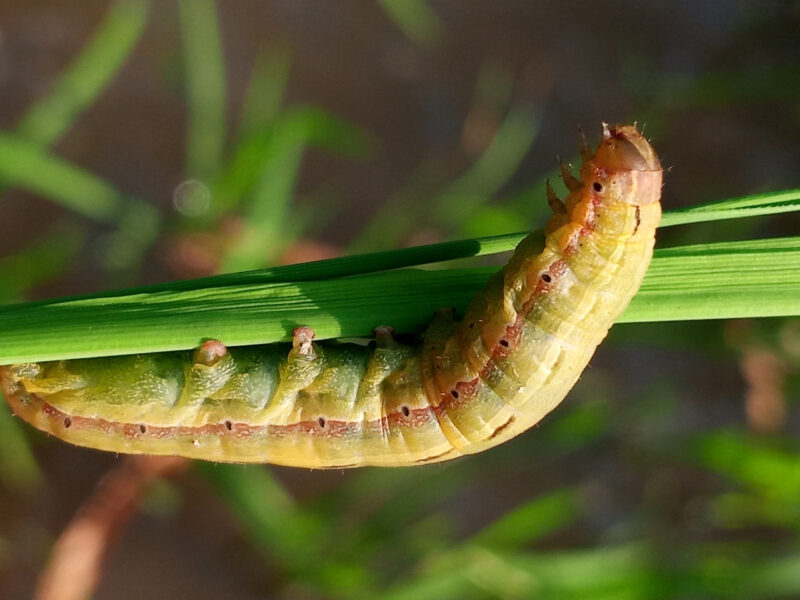
Lawn Armyworm
Apppearance
This species has a dark coloured body with unique white and yellow striped patterns along the length of the back.
Lifestyle
The lawn armyworm (Spodoptera Mauritia) is a damaging pest when in the larval life stage. When feeding the larvae often appear in groups, clumping around stems and foliage. Severe infestations can occur after a period of dry conditions followed by wet conditions.
Habits
Lawn armyworms are found globally and are drawn to barley, grasses, nut grass, oat, wheat and most lawn grasses. This species is known for its ability to rapidly damage lawns, pastures, and crops. The lawn armyworm’s voracious appetite makes it a critical concern for both agricultural and residential lawn care.
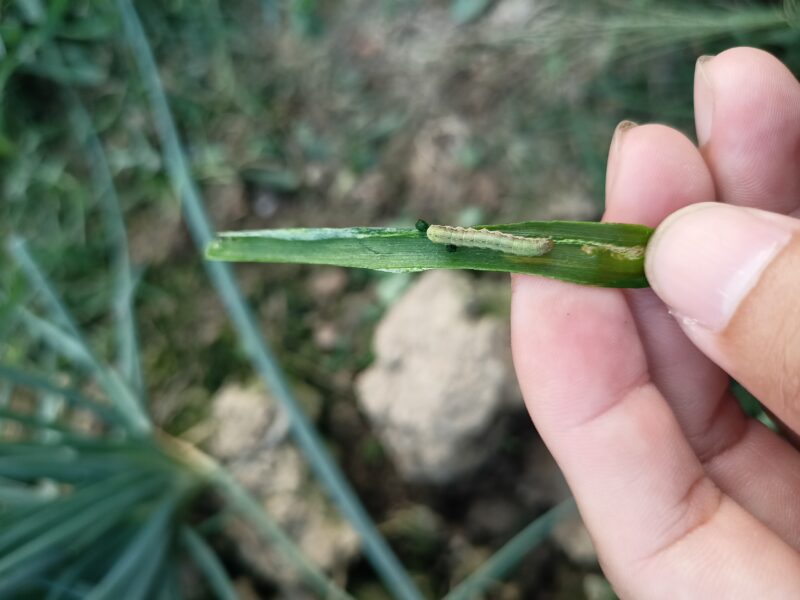
Beet Armyworm
Apppearance
Beet armyworms (Spodoptera exigua) are greyish-brown with dark spots on their bodies.
Lifestyle
These armyworms attack a wide variety of plants including sugar and table beets, beans, asparagus, celery, potatoes, cotton, tomatoes, lettuce, peas, tobacco, cereal grains like wheat and corn, oilseed plants such as flax, many flowering plants, and weeds.
Habits
The beet armyworm is a widespread agricultural pest that originated in southeast Asia but has since spread globally. They are found worldwide and feed on crops such as beets, spinach, lettuce, tomatoes, and corn.
I found Armyworms! Help!
Don't worry, we're here to help. Follow these steps to stay safe until help arrives!
Call a Professional
Call Flick Pest Control Immediately.
If you encounter armyworms in your home or business, you may be dealing with an infestation. Don’t wait until the problem gets out of hand – we can help protect your property and ensure the health and safety of those around you. Fill out the form below or call 1300 270 019 today.
Leave the Armyworms Alone
Trust Flick Pest Control to handle the situation
Our pest control technicians have the knowledge, experience, and tools necessary to effectively and safely eliminate pests from your home or business. Attempting to treat armyworms on your own can be risky and may not fully eradicate the problem.
We will and ensure a safe and effective outcome for your property.
There May be More!
Don’t Go Looking Around!
Flick’s pest control experts will perform a thorough inspection of the property to identify any areas where armyworms may be present, followed by the development of a treatment plan tailored to the specific needs of the situation. By implementing effective pest control strategies, we can help ensure a pest-free environment for you.
